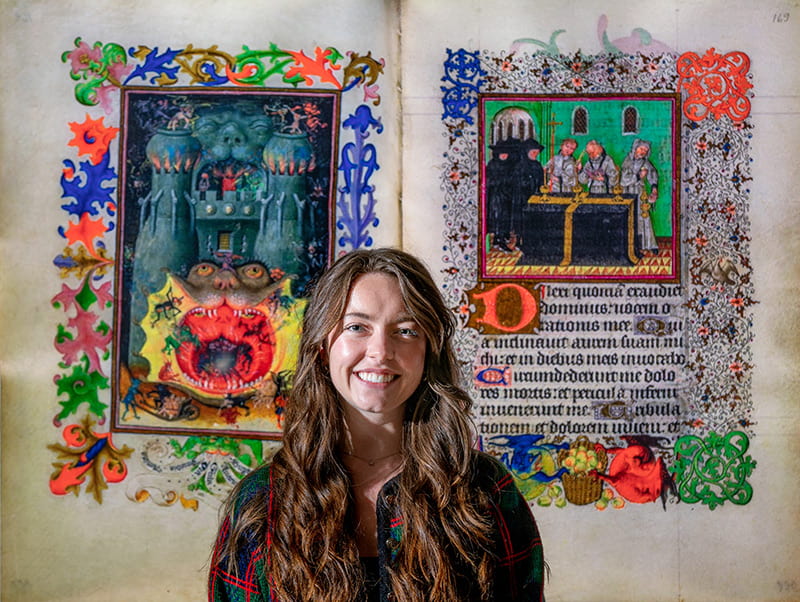
By CD Eskilson / Photos by Cheiko Hara
Though art today is associated with museums and galleries, art in premodern Europe was linked to one’s fate after death. In fact, many believed it could save their immortal souls.
“The last phases of the Middle Ages and beginnings of early modernity were a very turbulent, transitional period,” explained Lynn Jacobs, Distinguished Professor in art history. “Transitions are difficult, and I think that’s the reason why there’s this fascination with the macabre in Northern European art.”
Throughout her Signature Seminar course Death and Art, Jacobs unpacked the chaos of the 15th and 16th centuries that led many Christians to seek comfort in art. The class examined and discussed the era’s architectural sites and artistic genres that functioned in relation to death including chapels, monasteries, altarpieces, tombs, epitaphs and books. They also looked at the works of artists who focused on themes of death such as Holbein, Bosch and Bruegel.
Students in Death and Art also gave their own presentations on artistic themes throughout late medieval art. To Jacobs, the students’ work highlighted the enduring curiosity with death in art produced today.
“We started the semester thinking about the differences between medieval and modern attitudes toward death, and its impact on how art functioned in the past,” she noted. “But as we come toward the end of the semester, we’re seeing how certain themes in medieval art — such as the links between death, sex and the Fall; the fascination with the macabre; and hopes and worries about the joys and horrors of the afterlife — continue to resonate in contemporary art and society in a surprisingly wide variety of forms.”
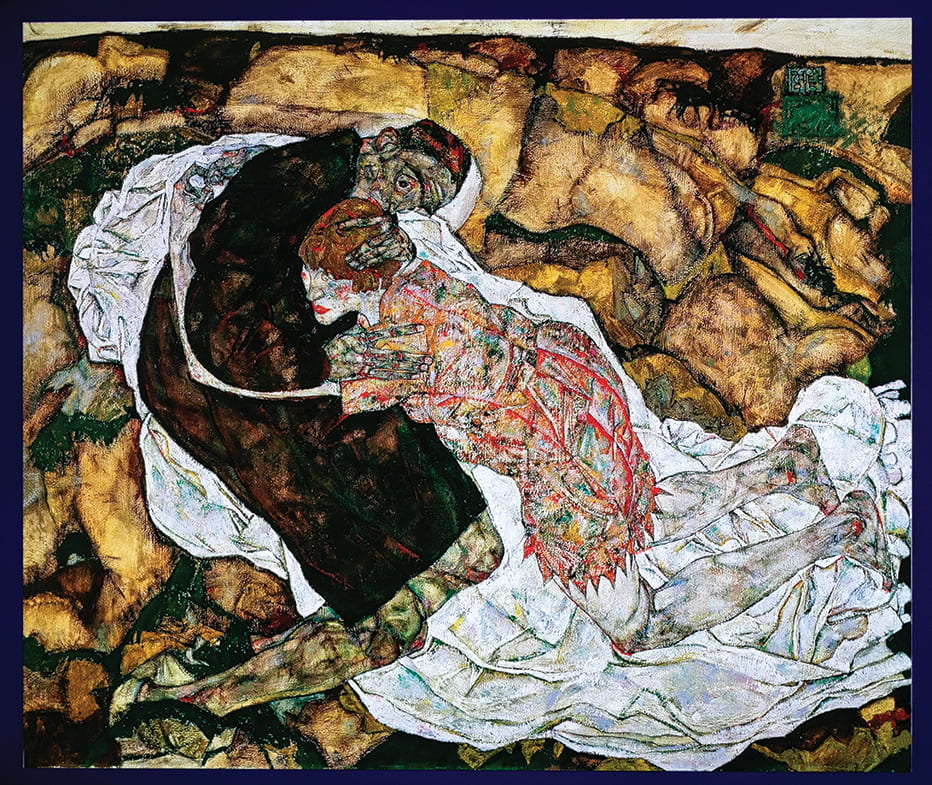
From top left: Egon Schiele, Death and the Maiden (1915) oil on canvas; Albrecht Dürer, The Ravisher (1495) copper engraving; Mia Bingaman stands in front of John Everett Millais’s Ophelia (1851-2) oil on canvas.
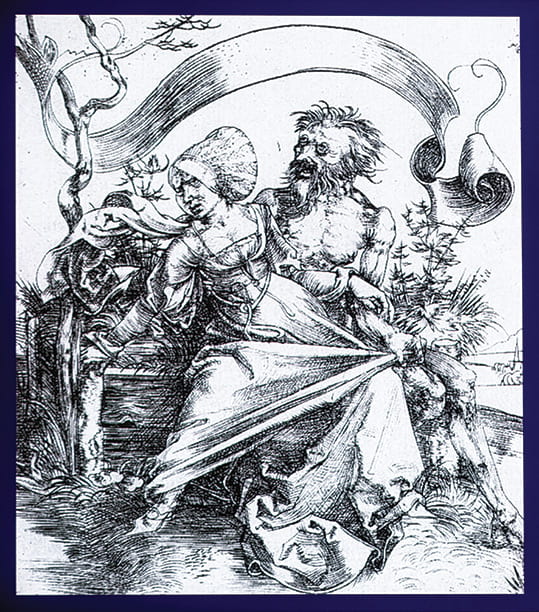
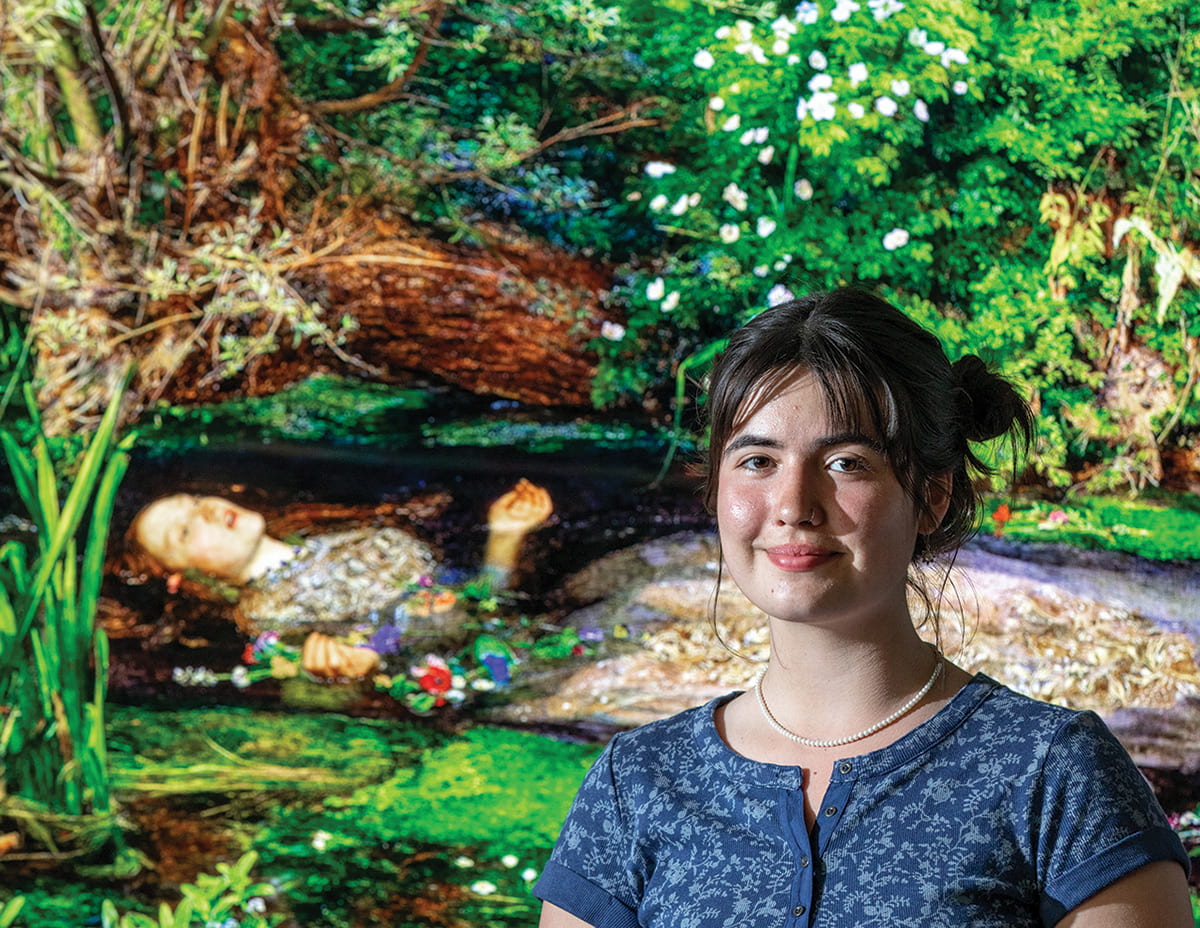
Mia Bingaman — a psychology major and a German minor from Edmond, Oklahoma — presented on Death and the Maiden, a popular late-medieval art motif emphasizing the entanglement between sex and violence. Bingaman touched on artistic images that depict maidens as symbols of purity and eroticism while also being helpless victims of Death.
Bingaman emphasized Death and the Maiden’s continual relevance in art today. “The gender stratification that fostered the development of this motif during classical antiquity is still actively present today,” she stated. “Our resulting affinity for vulnerable young girls being synchronously sexualized and victimized is inescapable in media, from our beloved Nabokovian nymphets to Bram Stoker’s Mina Harker.”

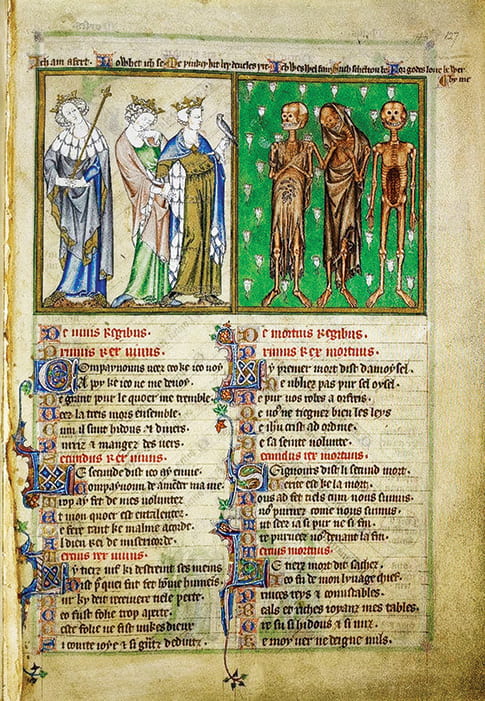
From left: Liam Ellner stands in front of Master Trecentesco of Sacro Specol’s The Three Living and the Three Dead (14th Century) fresco located in Sacro Speco Monastery in Subiaco, Italy; De Lisle Psalter manuscript, The Three Living and the Three Dead (1310) illuminated manucript.
Liam Ellner — a finance major from Columbia, Illinois — examined “the three living and the three dead” motif throughout his presentation. He looked at artwork that retold a medieval poem of three hunters who come across three corpses in varied stages of decay, the sight of which makes them more conscious of their mortality. Such paintings were meant to send a warning to viewers at the time.
“Through the use of these mirrors of mortality, artists drew the living’s attention to the fact that death is indeed coming for them by providing a look into their future,” Ellner explained. Though there are no recorded instances of art representing the poem after the 16th century, the message might still resonate with many audiences today.
“By remembering that we all must die, the hope is that we learn to face that truth, and possibly remember how to live in the meantime,” he said.

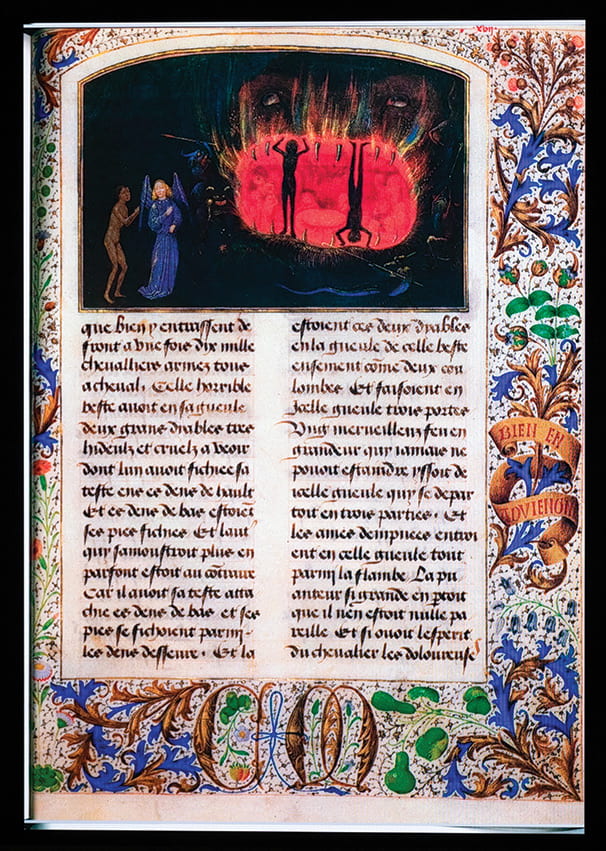
Kate Hodgson — an art history major and anthropology minor from Bentonville, Arkansas — presented on Hellmouth iconography, which envisions the entrance to Hell as the literal gaping mouth of a monster such as a lion, dragon or leviathan. The strangeness of the motif is what drove Hodgson to study it further.
“Hellmouths are one of the most iconic and mysterious artistic traditions from the Middle Ages, but beyond their terrifying edifices, they can tell us a lot about people’s attitudes towards and anxieties about death and the afterlife,” she noted. Hodgson also pointed to the modern legacies of the motif throughout literature in works like Jane Eyre, Babylon Revisited and “Morning After” by Langston Hughes. “Most recently, the Hellmouth has made its way into the music industry, with the forthcoming album by American singer and rapper Doja Cat, set to be titled Hellmouth,” Hodgson added.
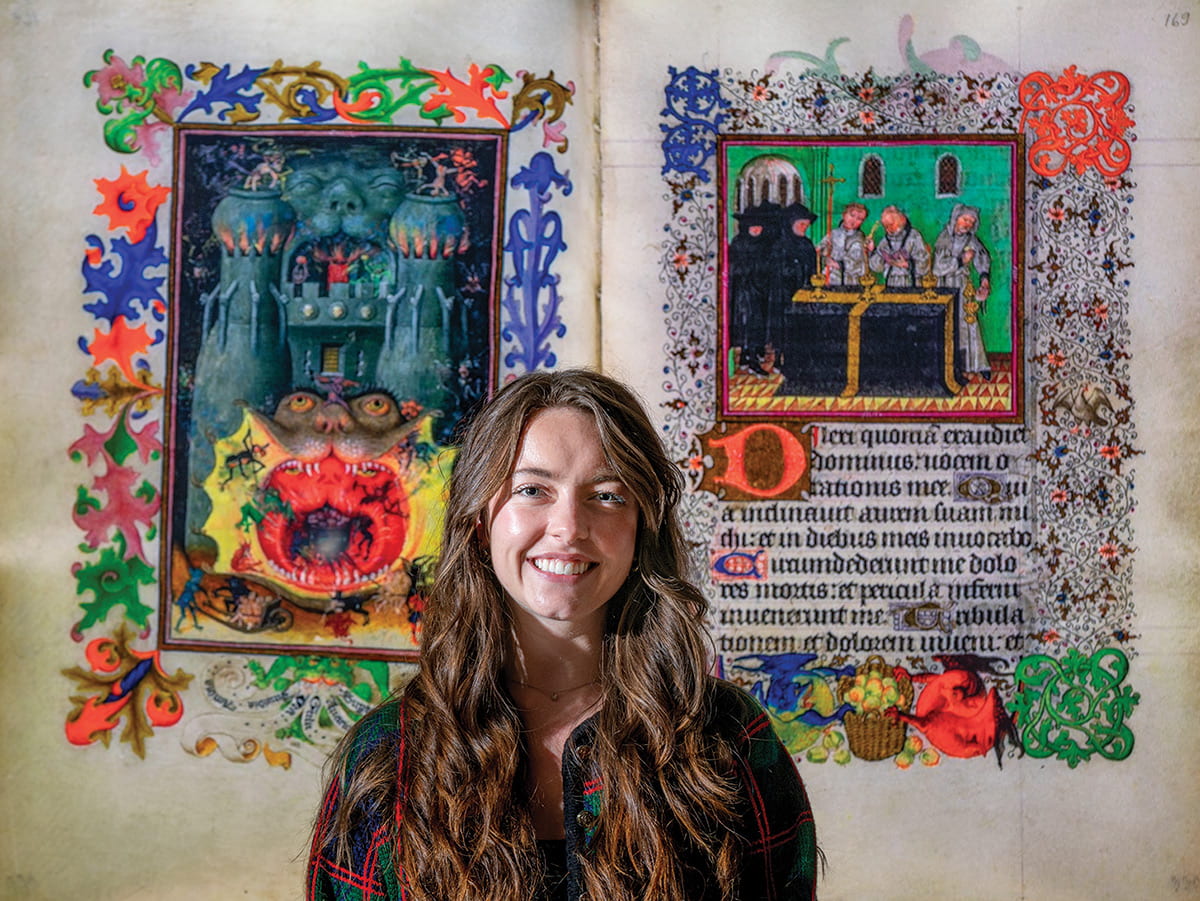
Images, from left: Winchester Psalter, Harrowing of Hell (12th Century) illuminated manuscript; Simon Marmion, The Beast Acheron (c. 1470) illuminated manuscript; Kate Hodgson stands in front of the the Master of Catherine of Cleves’s Mouth of Hell; Final Absolution (1440) illuminated manuscript page.

